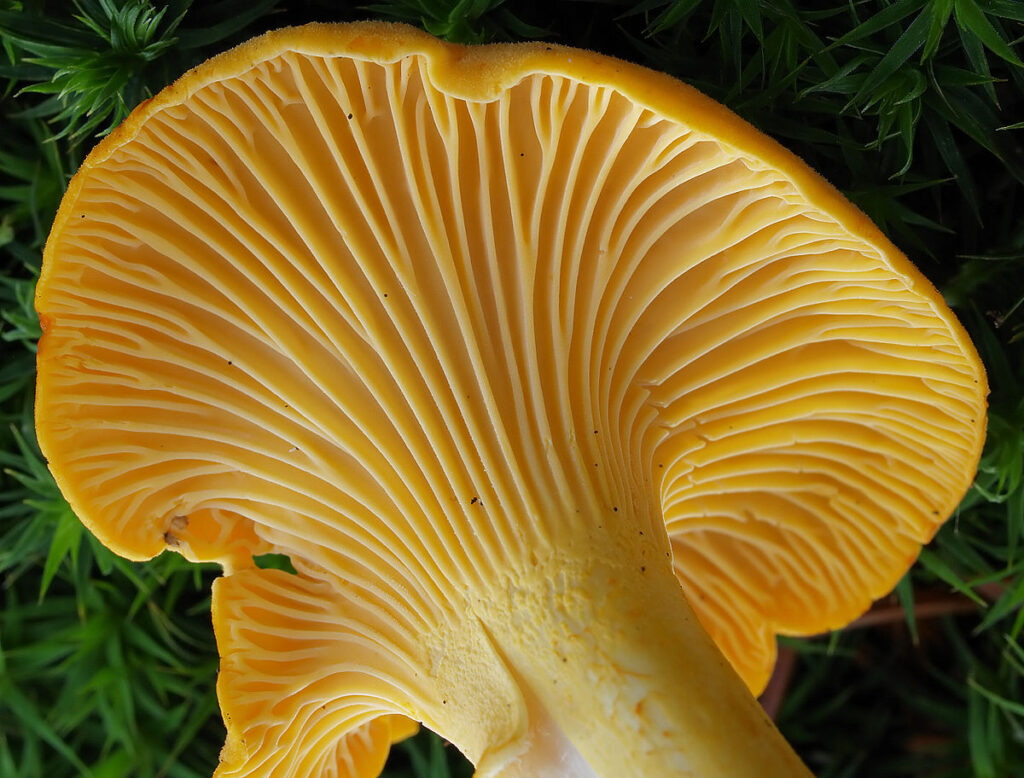Lifestyle & Culture, Link in Bio
Where to Look for Wild Chanterelle Mushrooms
Chanterelle Mushrooms
Searching for delicious wild chanterelles is one of those hobbies that combines the thrill of an Easter egg hunt with the invigorating exercise of hiking through a beautiful, serene forest. It should come as a surprise to no one why hunting for mushrooms has boomed in popularity over the years, and if it’s a recreation that you’d like to try for yourself, mother nature provides many clues for the best places to look.
‘Tis The Season To Hunt
Before you lace up your hiking boots and snatch the mushroom guidebook off the shelf, know that chanterelles don’t grow year-round. Sure, in some areas of the United States, they appear more frequently and earlier in the year than others, so knowing when to head out is just as important as knowing where to look. For instance, foragers in the Pacific Northwest will want to wait until the temperatures drop to near freezing and the rainy season begins. In contrast, fungi fanatics in the southeastern states can start searching as early as June!
You can bet that delicious edible mushrooms can be found wherever you are. Chanterelles like cooler temperatures, darkness, and lots of water, so get out there and look if the weather is right!
Finding The Right Forest
For the most part, chanterelles like to grow in healthy forests with plenty of canopy coverage. A dense canopy allows moisture to stay in the ground for longer and keeps the forest floor from being flooded with sunlight. If you’re located on the east coast of the United States, your best bet is to search forests comprising of oak, poplar, and maple trees. For those located on the west coast, coniferous forests with mature fir trees are usually the most fruitful locales.
Elevation
Finding a spot with all the suitable trees doesn’t mean you’ve hit the jackpot yet! Chanterelles are picky about their climate, and that includes their elevation. Foragers on the east coast report finding them all the way down to sea level, but west coast hunters rarely have that luck. The general consensus is to search at one-thousand feet elevation or more if you’re located in the western United States.
Moss And Ferns
Most mushrooms need a healthy amount of moisture to fruit, and chanterelles are no exception. When you’ve found the proper forest and elevation, then it’s time to look for the fauna the chanterelle commonly grows under or near. Because moss almost exclusively grows in areas with above-average moisture, this green carpet is a frequent companion to delicious forest mushrooms. The same can be said of ferns, who prefer indirect sunlight and plenty of water. When you find ferns and moss, chances are you’re incredibly close to finding chanterelles.
Where There’s One, There’s More
With a bit of luck and determination, you’ll eventually cut through enough brush to pluck up a delicious chanterelle. But the best thing about finding one chanterelle is there are most certainly more nearby. Chanterelles, like other mushrooms, are only the fruit of a deep underground network of mycorrhizae. What you see on top is only the tip of the iceberg, so if you’ve found one chanterelle, the chances are incredibly high that there are others close by or buried just underneath the duff.
When In Doubt, Toss It Out
Just because you believe you found a chanterelle doesn’t necessarily mean it’s a genuine article. There are many look-a-likes and imposters around the woods, including the poisonous jack o’lantern mushroom. Always be sure to bring a guidebook – or even better, an experienced guide – with you on your forays until you get the knack for identifying wild mushrooms on your own.

